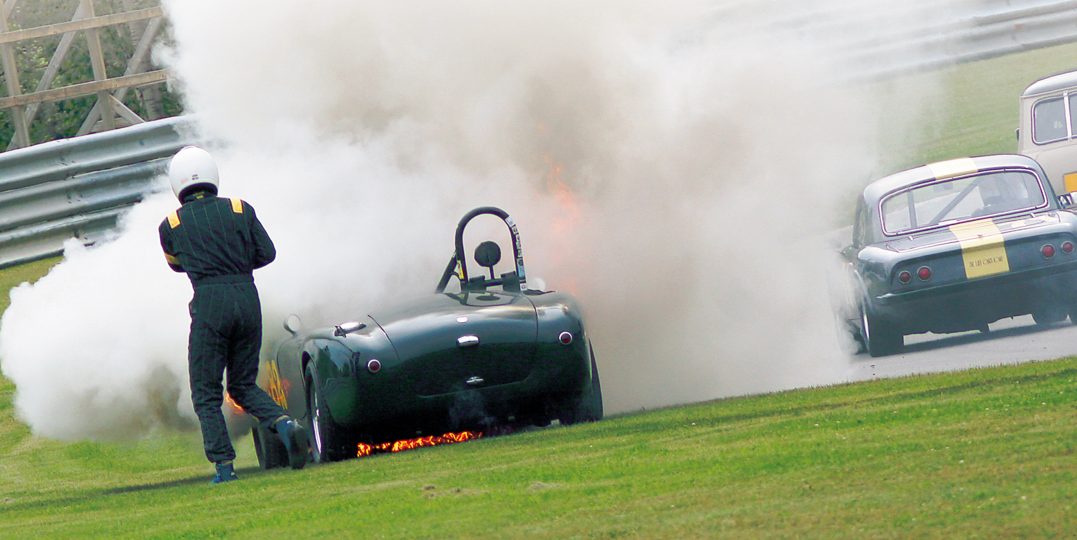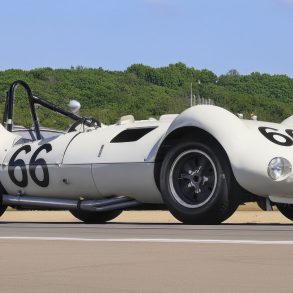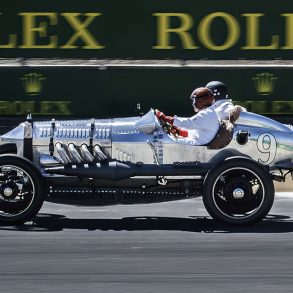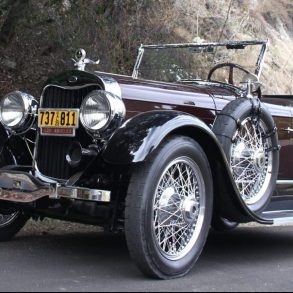Last summer, I was getting ready for a race here in California. It was a typically hot, Southern California day and so I was, of course, hesitant to get suited up any sooner than I had to. Once the time finally came, I walked into a friend’s trailer and joined a mutual racing friend as we pulled on our Nomex. After putting on my turtleneck Nomex underwear and pulling on my two-layer suit, I looked over at my friend who was pulling up his suit over his t-shirt, while sitting on a stack of brand-new Nomex underwear…still in the bag. I asked him, “Aren’t you going to put on your underwear?” Without missing a beat he replied, “Naw, it’s too hot today. I only wear those in the winter.” It was at that moment, that I realized that historic racing has a safety education problem.
After that weekend, I decided that one of the best services that we could provide the hobby, as a whole, is to do some special articles on the facts that everyone needs to understand before choosing their personal safety gear. After seeing the carnage that took place at events like the BRIC and the Goodwood Revival this past summer, I knew we couldn’t afford to procrastinate on this idea any longer. So, in place of our usual feature article this month, you’ll find a series of smaller articles devoted to the underlying fundamentals and certification of several critical pieces of driver safety equipment. Unlike a lot of magazines that put together “safety issues” as a way of selling you specific products, we’ve taken a different approach. We’ve asked several experts in their respective fields to provide you with the knowledge necessary for you to make your own choice of what is best for your specific application. I hope you find this useful, and as always, would welcome your feedback.
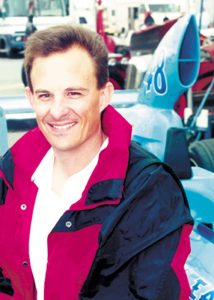
Editor
Our introductory safety feature this month, comes from Bill Williams, who is the Chief of Tech Inspection for SVRA. The question we posed to Bill was simple, “In the areas of personal safety, what are some of the key problems, factors, or flat out Bozo-no-no’s that you have seen over the years?” Some of the things Bill highlights in his article “It’s OK” might surprise you…I know a few will shock you.
Our next article focuses on the helmet. As most of us are familiar with, racing helmets have to be Snell Foundation–approved and, on a rolling basis, must be of a certain minimum Snell rating. Starting this year, most clubs now require Snell 2000 or greater certification. However, what does the Snell rating really mean, what level of driver protection does it signify and most importantly when do you need to buy a new one? In “Another Snell Cycle, Is This Really Necessary?” Bell Helmet general manager Kyle Keitzemann walks us through the new Snell certification process and how it should affect your choice of helmet.
While a good helmet is critical to a driver’s personal safety, it can only protect about 15% of a driver’s body. The lion’s share of protection of our torsos and arms falls to the flame-retardant driver suit. But with so much riding on the design and quality of your driver suit, did you research the certification criteria and standards for suits when you bought yours? Are you aware of the many common factors that can render your seemingly fine suit unusable? In cooperation with Jennifer Faye, program manager for the non-profit SFI foundation, I explore what the various levels of SFI-driver-suit certification mean and what are the hard facts that you need to know before you buy your next suit. I think you’ll be surprised by some of the things we learned!
Finally, one of the most talked about and debated personal safety developments of the past five years has been the head-and-neck restraint system. Not that long ago, historic racing clubs argued whether it should be necessary for drivers to wear horseshoe collars. Now some vintage racing clubs are mandating head-and-neck restraints. With so many new systems being developed, and with such broad heterogeneity of applications in historic racing, we sought out an expert that could analyze all the current systems and present us with the key facts that a historic racer needs to consider. Our man for this challenging task was Trevor Ashline a safety engineer who has worked for the past two decades designing seating and driver restraint systems for professional racing. Ashline, gives us a brief introduction to the new SFI 38.1 safety standard for head-and-neck restraint systems and then presents the pros and cons of the only three systems that meet this new, extremely stringent test.


